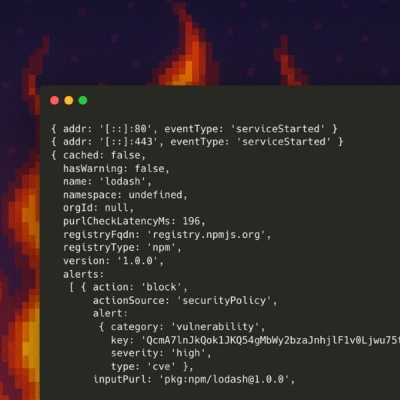EBuilder : an HTML element builder
Highly configurable and manipulable elements in a single declaration, with a functionnal touch.
README in progress!
Overview / Main features
- freedom of input
- chainability, functionnal aspect
- single declaration
- this binding
Install
Using npm
npm i ebuilder-js
import EBuilder from 'ebuilder-js'
EBuilder('div').into(document.body)
Using bundle
<script src="./path/to/ebuilder.min.js">
EBuilder('div').into(document.body)
Features
Properties
el, element: the generated HTML element.
Methods
Setter methods
setAttributes()
setProperties()
setListeners()
setChildren()
setClasses()
setStyles()
set()
Miscellaneous
htmlContent(): returns the current element's innerHTMLcount(): returns the current element's amount of child nodes (might change to child element nodes instead)toString(): returns the current element's outerHTML. It can be handy to add it to the DOM quite quickly
const elButton = EBuilder('button').set({ ... })
someElement.innerHTML += elButton
Signature:
EBuilder(myElement).set({}: {
attributes?: { [attributeName: string]: string },
properties?: { [propertyName: string]: any },
listeners?: EventTuple | EventTuple[]
children?: ValidChild | ValidChild[],
})
DOM methods
- into()
- before()
- after()
- replace()
- swap()
Function as value
Any value can be replaced with a function to be executed in the process (provided that function returns an appropriate value). This can be useful in many situations:
- Non-static value
- Conditional value
- Since value functions are called with the current EBuilder object as
this, it allows auto-reference
This can be useful when you want to render a non-static result. Consider the following:
EBuilder(myElement).setProperties({
'innerHTML@on:click': myElement.el.htmlContent() + `<p>I have ${myElement.el.count()} children.</p>`
})
This won't work as expected as the length value is calculated once and will always output the value at the moment of declaration.
Instead, use the following:
EBuilder(myElement).setProperties({
'innerHTML@on:click': () => myElement.el.htmlContent() + `<p>I have ${myElement.el.count()} children.</p>`
})
Note that function expressions are called with this value as the current EBuilder instance, so you can do instead :
EBuilder(myElement).setProperties({
'innerHTML@on:click': function() { return this.htmlContent() + `<p>I have ${this.count()} children.</p>` }
})
children
Expects an array of / a single value of :
- HTML string (ex.)
- EBuilder instance (ex.)
- An Element (ex)
- ...?
@-rules
Added at the end of a key string, @-rules allow conditionnal evaluation of the corresponding value in an object. Such rules are available in every object argument of a setting method (.setStyles(), .setChildren()...), including the set() method at both levels:
const elButton = EBuilder('button').set({
'properties@on:mouseover': {
'textContent@interval:1000': () => new Date().getSeconds()
}
}).into(document.body)
@on, @once
The corresponding value will be set when an :eventName event is emitted by the current element.
{ 'key@on:eventName': 'value' } would basically translate to
this.addEventListener('eventName', () => element.key = 'value')
With @on the value will be updated each time the event occurs, and only the first time with @once
:eventName
The event name can be any string value:
- A built-in event:
click, keydown...
- A specific EBuilder event:
EBuilderinsert, EBuilderset
- Or any custom event of your own, such as:
'faisons comme ça!'
Note that EBuilder allows to dispatch such events easily with the dispatch() method, which allows to do such things:
Considering const elList = EBuilder('ul').into(document.body),
elList.set({
properties: {
'innerHTML@once:hi-there': () => elList.htmlContent() + '<li>2</li>'
}
}).setChildren('<li>1</li>').dispatch('hi-there')
will output:
#event-emitter
By default, the listener is set on the current element. But what if I want my element to react to an external event, like a click on a button?
To achieve this you can designate a specific target using # in the string key after the event name. But there's a catch: for EBuilder to recover the right object from that string, it must have been previously referenced with the given() method, as in the example below:
const myButton = EBuilder('button').into(document.body)
EBuilder('p')
.given([ myButton, 'buttonRef' ])
.setProperties({ 'textContent@once:click#buttonRef': 'Hello!' })
.into(document.body)
(More details about given() below)
The window object is an exception to this rule, as it doesn't need to be pre-indexed.
@timeout @interval
'key@timeout:duration', 'key@interval:duration'
These methods have the same behaviour as the eponym functions. Example:
EBuilder('div').into(document.body).setStyles({
width: '200px',
height: '200px',
transition: 'background 1s',
'background@interval:1000': () => `hsl(${360 * Math.random()}, 50%, 50%)`
})
@if
'key@if:functionReference: 'value'
The corresponding value is assigned if the specified :functionReference function returns true.
See given() for more info about references.
@for
-- EXPERIMENTAL --
'key@for:arrayReference: 'value'
The corresponding value is assigned a number of times equal to the length of :arrayReference
See given() for more info about references.



